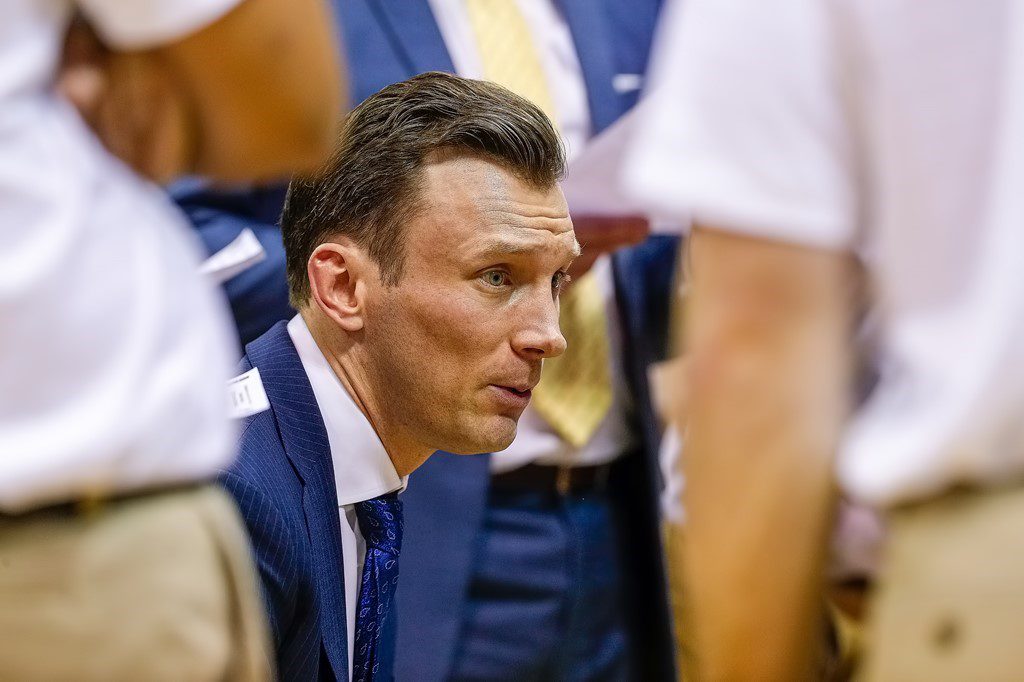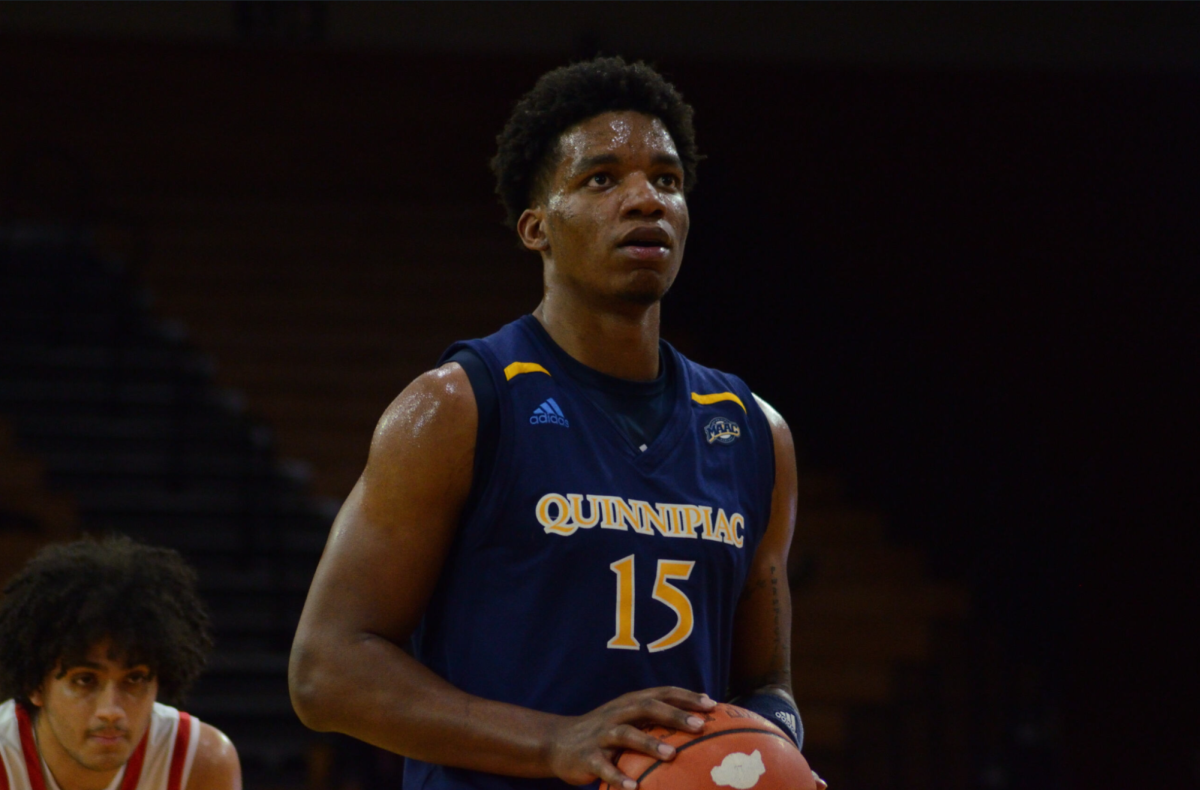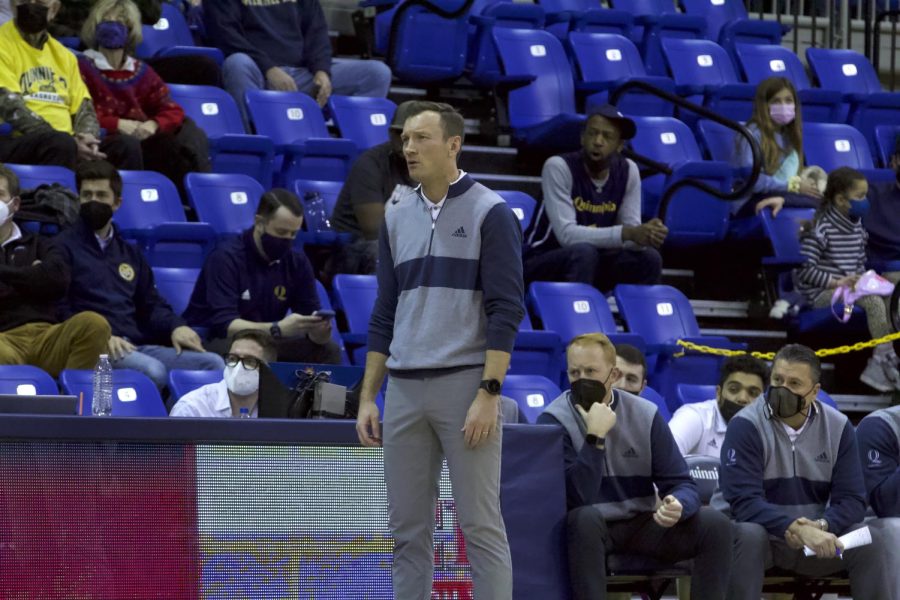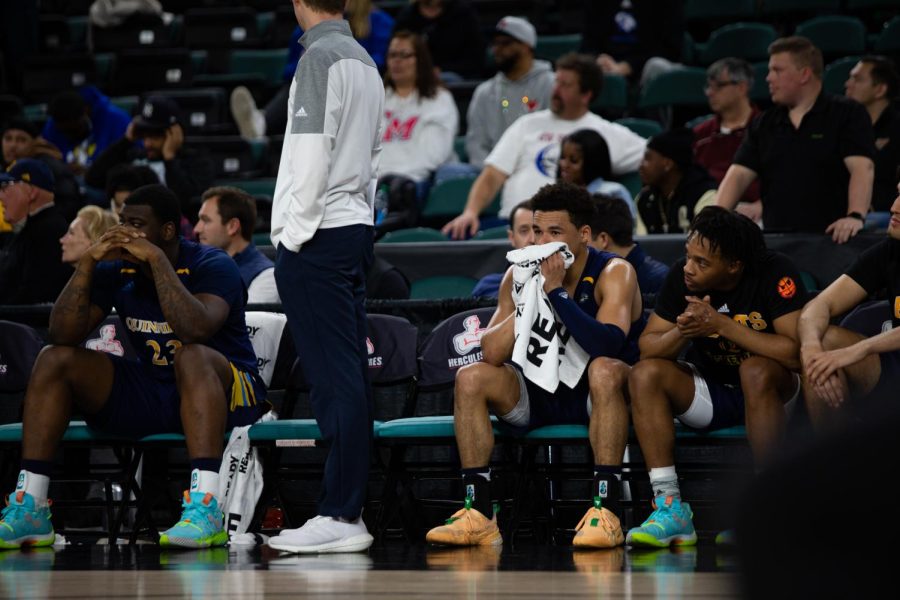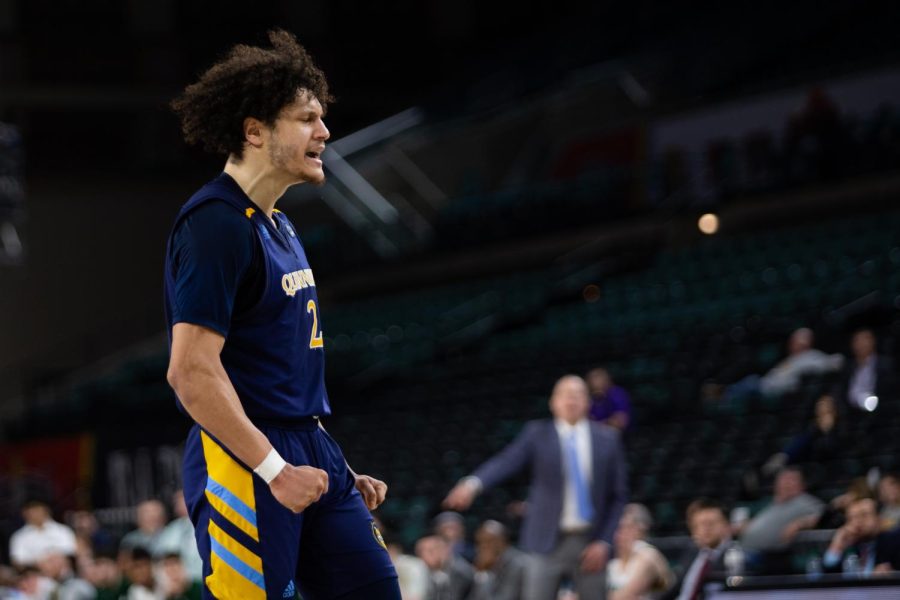By: Randy Del Valle Follow @RDelValle_19
Even though change may seem scary, the fear of the unknown sometimes ends up being a good thing. Let the past die, leave everything behind and start out fresh. It’s the only way to grow and get to the next level.
This is true in sports when trying to build a team that fails to improve and continues to underachieve. It’s the same scenario the Quinnipiac men’s basketball team found itself in last year.
When former coach Tom Moore took over as head coach of the Bobcats in 2007-08, he inherited a team that only had two seasons with a record above .500. In his first six seasons at the helm, Moore went 108-81 finishing first in the Northeast Conference (NEC) once.
After 2012-13, Quinnipiac moved from the NEC to the Metro Atlantic Athletic Conference (MAAC). In its first season in the MAAC, the Bobcats went 20-12 finishing third in the conference.
It would be Moore’s best season.
After that he went 34-57 in his last three years coaching the team. Going 10-21 in his last season (2016-17) with a team that included Mikey Dixon (MAAC Rookie of the Year), Peter Kiss(another freshman standout who won MAAC Rookie of the Week four times) and Chaise Daniels (the team’s third leading scorer and arguably one of the best big men in the conference).
In his 10-year tenure coaching Quinnipiac, Moore led the Bobcats into the NIT, CBI and CIT. But his team didn’t meet the expectations of making the NCCA Tournament.
Moore did a lot for the men’s basketball program, but he reached his ceiling. Change was needed if Quinnipiac wanted to improve and take its team to new heights.
It’s understandable that some people would have different feeling towards firing a coach that achieved so much for their team. But sometimes that is the necessary option. A new voice is needed in the locker room with a different approach to running the team.
Even if the new coach struggles in the beginning, fans need to be patient before they start to see change.
Take Baylor for example. Fans there had to wait four years before their new coach, Scott Drew had success. After Dave Bliss resigned from Baylor in 2003 for violating NCAA rules, Drew took over the basketball team. The NCAA cut Baylor’s scholarships, banned the team from postseason play in 2003-04 and couldn’t play in nonconference games in 2005-06. In his first four years Drew was 36-69, but in 2007-08 the Bears won 21 games. Baylor made the NCAA Tournament for only the fifth time in school history. Drew used making the tournament to his advantage. He was able to attract and bring in strong recruits to Baylor.
As a result the team broke through two years later and made the Elite Eight in 2010. Under Drew, Baylor has made the NCAA Tournament seven times
A lot of Drew’s success came from the administration being patient with him and his process. If Drew were fired after only three years, who knows where the basketball program would be right now. He helped bring a program that had little success to one that’s competing to go to the NCAA Tournament every year. It was bumpy ride for Baylor, but it’s process worked.
This is precisely what Quinnipiac is striving to do now with its new coach Baker Dunleavy in charge. The goal is to have a team that will consistently put up 20-win seasons and compete to get into the NCAA Tournament year in and year out, just like Baylor has achieved with Drew.
Dunleavy was hired to continue building the basketball program. His goal is to win the MAAC and lead the team into the NCAA Tournament, but it’s not as simple as it sounds.
Even with the Bobcats finishing 12-21 and seventh in the conference in Dunleavy’s first season, he’s already exceeded expectations even though the record may not say the same.
The team that was picked to finish last in the MAAC preseason poll won their first MAAC Tournament game in four years. Quinnipiac beat Siena in the first round, and then upset Canisius, the co-regular season champions in the quarterfinals. The Bobcats historic run came to an end in the semifinals, losing to the Fairfield Stags.
Dunleavy accomplished this with a team that had five seniors on the roster and a freshman as the starting point guard. Not to forget that his leading-scorer, senior Cam Young, played only eight minutes his junior campaign.
Dunleavy got these players to play competitive in almost all of their games this year. Something that didn’t seem likely before the season started.
Just like Drew at Baylor, fans are going to have to be patient with Dunleavy.
Wait until he gets to handpick his roster and develop the recruits he signs, then the Bobcats’ coach can be judged on the job he’s done.
If he doesn’t get the time he needs to build this program the way he envisions, then Quinnipiac is doing it all wrong and only going backwards in their pursuit to build a nationally recognized college basketball program.
Coaches such as Drew, Steve Fisher and John Thompson built strong college basketball programs for Universities that weren’t known for basketball before they arrived.
Now Dunleavy looks to do the same.
He has a tough task on his hands, but just maybe he can be Quinnipiac’s version of Scott Drew.


